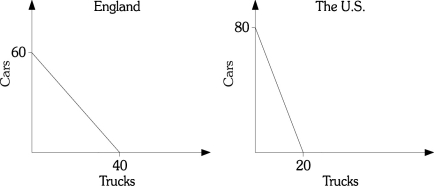Refer to the information provided in Figure 19.2 below to answer the questions that follow.
 Figure 19.2
Figure 19.2
-Refer to Figure 19.2.the U.S.has
Definitions:
Behavioral Economists
Investigators who explore how various psychological, cognitive, emotional, cultural, and social factors determine the economic decisions of both individuals and organizations.
Time Inconsistency
A situation where a person's preferences change over time in such a way that what is preferred at one point in time is inconsistent with what is preferred at another time.
Behavioral Economics
A field of economics that examines the effects of psychological, cognitive, emotional, cultural, and social factors on the economic decisions of individuals and institutions.
Economic Behavior
The study of how individuals, households, and organizations make choices to allocate resources in the midst of scarcity and the effects of these decisions on markets and the economy.
Q4: According to the World Bank,in 2006 the
Q18: Supporters of supply-side economics claim that Reagan's
Q39: Purchasing power parity theory holds that exchange
Q50: Refer to Figure 3.17.At a price of
Q52: A $100 million increase in government spending
Q71: An unexpected decrease in nonlabor income will
Q79: The two channels through which monetary policy
Q91: Refer to Figure 19.2.The theory of comparative
Q121: Refer to Figure 19.2.the U.S.has<br>A)a comparative advantage
Q148: When an American buys an asset abroad,the